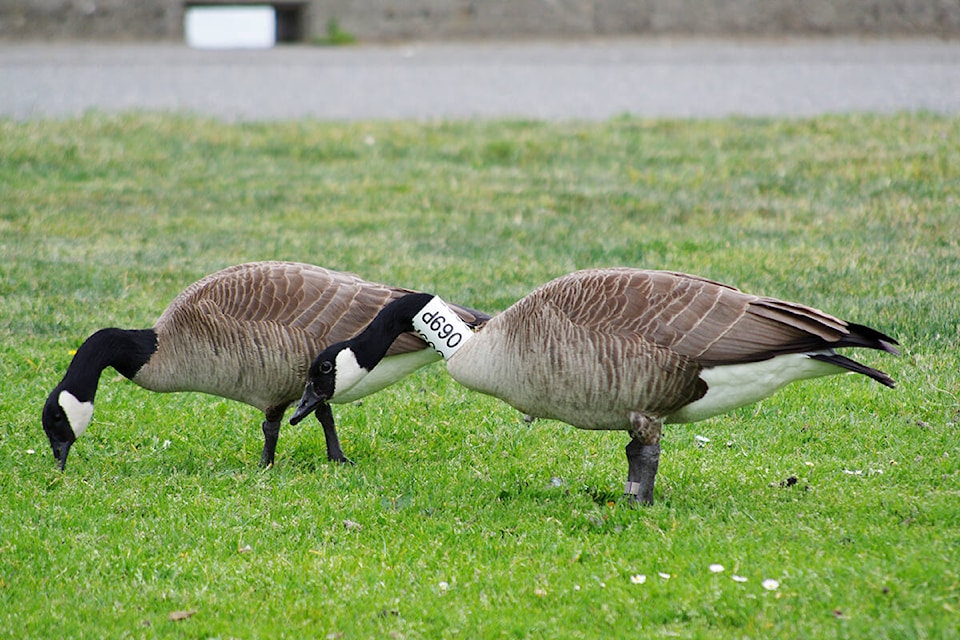Whether it’s a playing field or an ecological reserve, a local waterway or farmland, overabundant resident Canada geese are taking a toll on the Capital Region.
As it looks to create a coordinated approach, the Capital Regional District has gotten closer to implementing a strategy that could see more geese population-reducing actions begin as soon as next year.
The overpopulated geese are impacting environmentally sensitive areas – like the islands off Oak Bay – and important estuaries in the CRD. Their foraging is putting pressure on native plants and edging out other animals.
The CRD also noted the country’s namesake birds are fouling, damaging and removing crops on local farms and their poop creates an aesthetic issue for the region but also raises concerns about water quality and public health.
The CRD’s proposed Canada Goose Management Service would partner with local municipalities, First Nations, landowners, farmers, government agencies and other groups to monitor the goose population and impacts and create a public education program around management.
It would also include teaming up with other regional districts, communities and First Nations from across the Island to reduce the population to a more sustainable state.
The service would cost the CRD $237,000 in 2023, which would be shared by municipalities, electoral areas and local First Nations, with contributions based on population and assessments from those communities.
The CRD board in July asked staff to come back with a price tag for the service. The board unanimously approved initial readings of a bylaw that would establish the service on Oct. 12. At that meeting, staff said the service would include Canada goose egg adding – terminating the embryos – and bird culling next year. Any culling would include the goose meat not going to waste, staff added.
CRD crews addled 1,298 eggs in 241 active nests across the south Island in 2021.
The CRD has a large proportion of the estimated year-round Canada goose population, with Island-wide numbers ranging up to 15,000. The geese were growing by 16 per cent annually between 1977 and 1997, but more recent surveys – utilizing helicopters, drones and kayaks – found the goose population is doubling about every four years.
A review that was presented to the CRD earlier this year found that the lack of a service that included every community in the region resulted in a fragmented response. It said farmers and landowners were resorting to hazing the birds with dogs, noise or lights.
READ: Vancouver Island’s overabundant Canada goose population has CRD looking for solutions
READ: Canada goose poop problem in Greater Victoria needs new solutions, experts say
jake.romphf@blackpress.ca. Follow us on Instagram. Like us on Facebook and follow us on Twitter.
